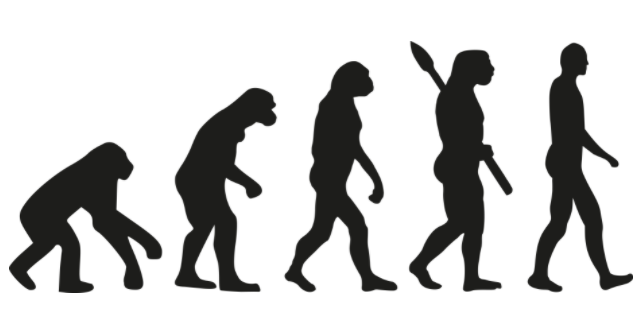
I’ve always been intrigued by patterns that exist between living organism and business organizations. For either one, their motivation for evolutionary change is geared solely around adaptation and survival. A business is like a living, breathing organism. It is created with the intent to grow, and it’s driving motive is to survive. Like any living organism, an organization pulses with life and wants to flourish. In business, competition can drive it to extinction, or can be the catalyst for innovation. In nature, natural selection fuels the same kind of motivation for change through mutation and natural selection. If a new business (or species) has the right strengths and characteristics, it will begin to grow and scale (or reproduce) in order to ensure its survival.
Intelligent life came to be after millions of years of slow, uneventful evolution, with each mutation tested by mother nature, her mercy being harder for some and kinder to others. She essentially eliminates the less capable members of the species, ensuring survival for the strongest ones. This guarantees the advantageous traits are successfully handed down to surviving offspring, and the cycle repeats again and again. In business, mother nature’s influence is alive and well in the free market, with fate attracted to certain enterprises while killing off weaker ones that don’t produce anything of value.
So what are the basic components of an intelligent organization? Is it not some of the very same principles that have guided nature? Isn’t it interesting that like nature, intelligence in the form of technology has also evolved ever so slowly (albeit on a much shorter timeline than nature) for hundreds of years, with incremental improvements made along the way, leading up to the invention of computers which jump started the technological revolution. Thanks to Moore’s Law, this pace has continued up to now. There are many similarities that exist between the laws of business and the laws of nature, both of which determine survival. Some interesting observations that exist between nature and business are listed below:
- They both have basic needs that must be met – shelter (infrastructure), food and water (revenue)
- They both have an instinctual need to grow when conditions in the environment (market) are favorable
- They both have the drive to reproduce (expand) as a means of ensuring the survival of the tribe or herd (the employees, customers, and shareholders) and of the species (the company)
- Their constant efforts to take advantage of fortuitous circumstances as they arise (innovating, acquisitions, taking risks) are a primary focus
- They are always on the lookout for predators that may threaten their existence (competition)
- They look for patterns that exist in their surroundings, and take action accordingly (the premise of a SWOT)
- They identify with larger groups or herds (trade organizations, lobbyists) for protection against threats or perceived threats (legislative and/or regulative actions)
These comparisons aren’t too surprising, but to examine mother nature and business in the same light begins to illuminate their underlying patterns. And what makes both an organism and a business successful in their quest for survival is their ability to identify patterns, and then to act on them. Science writer Michael Shermer coined the phrase “patternicity,” which is defined as one’s ability to find meaningful patterns in a world of meaningless noise. As a species, our ability to recognize patterns is essential to our survival. It’s how we learn and adapt from our mistakes. And whether in nature or in business, neither can survive if they’re not learning from the past and looking for patterns on how to act in the future.
Next time you’re in nature (or in the office) take a minute to observe the patterns around you. The similarities you identify might reveal vital clues that will allow your business to evolve and improve on a whole new level.
_________________________________________________________________
Connect with Jason Olsen on Twitter: https://twitter.com/JTPO
